
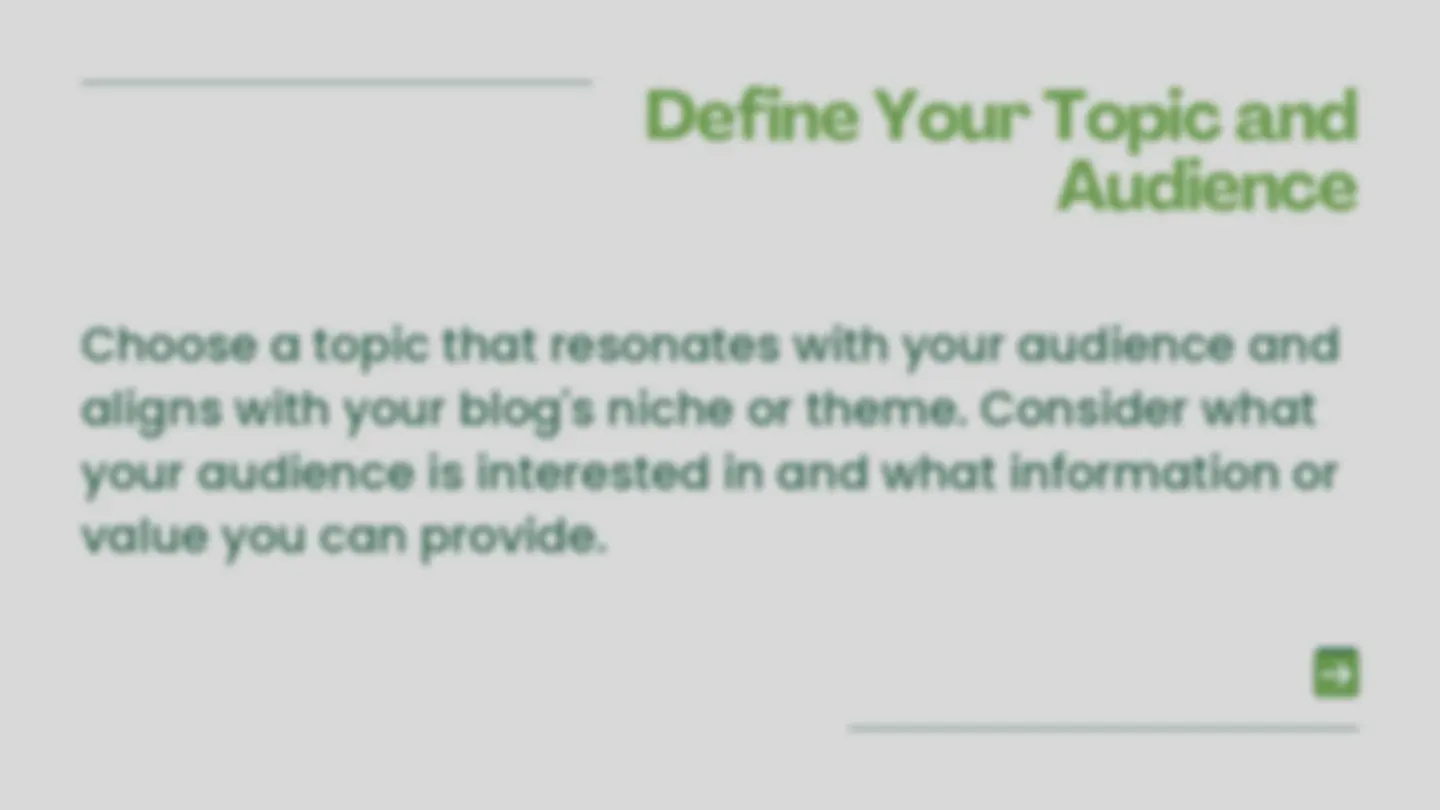
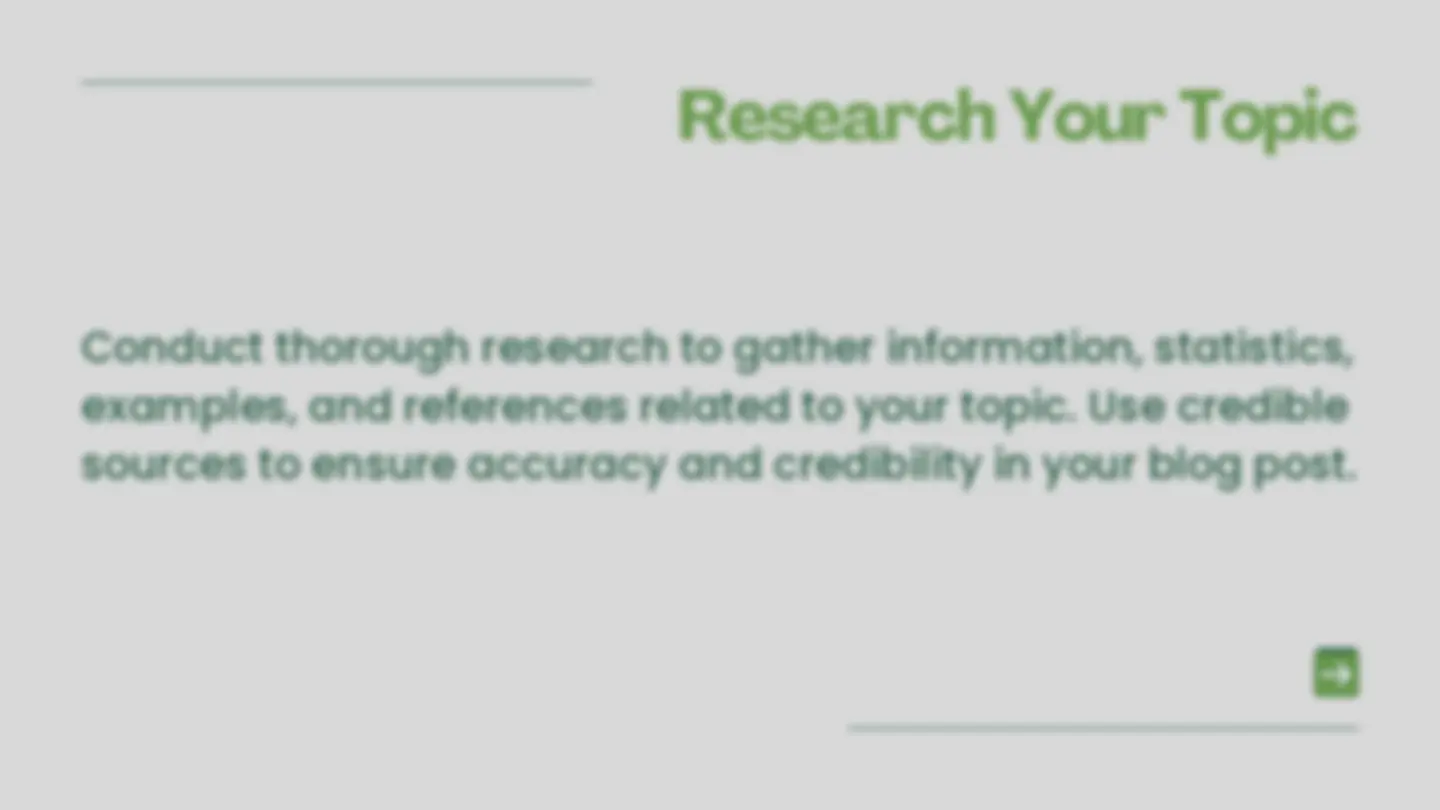
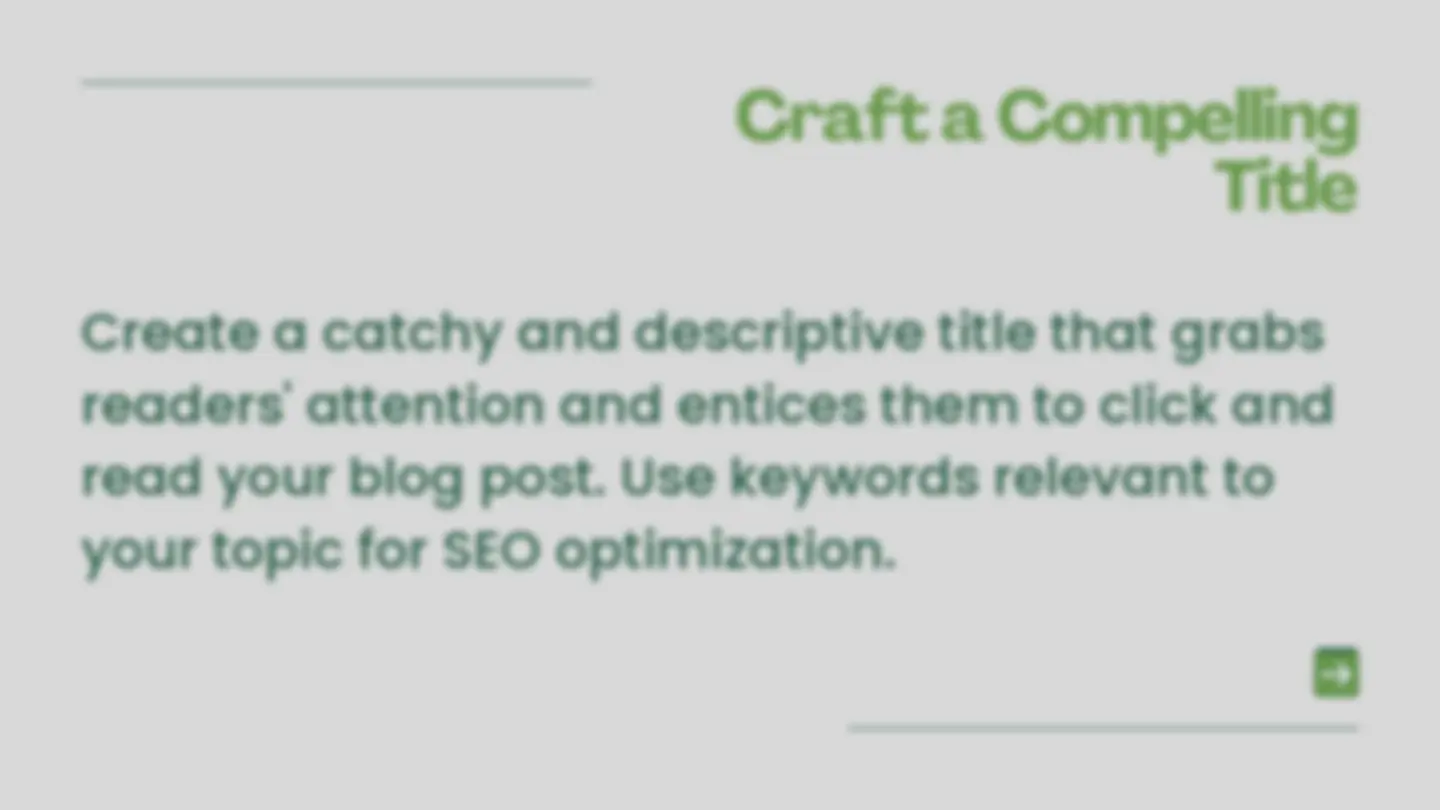
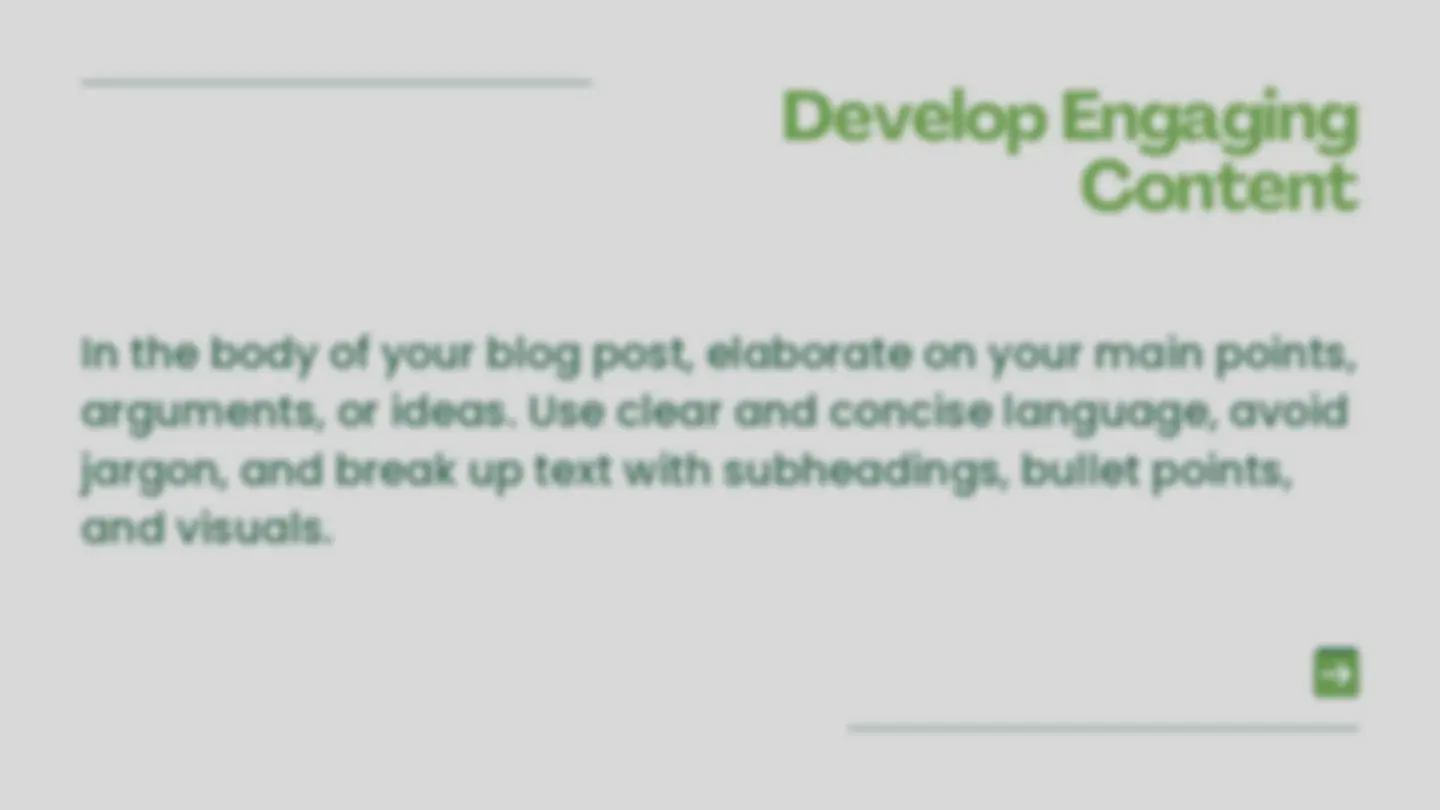
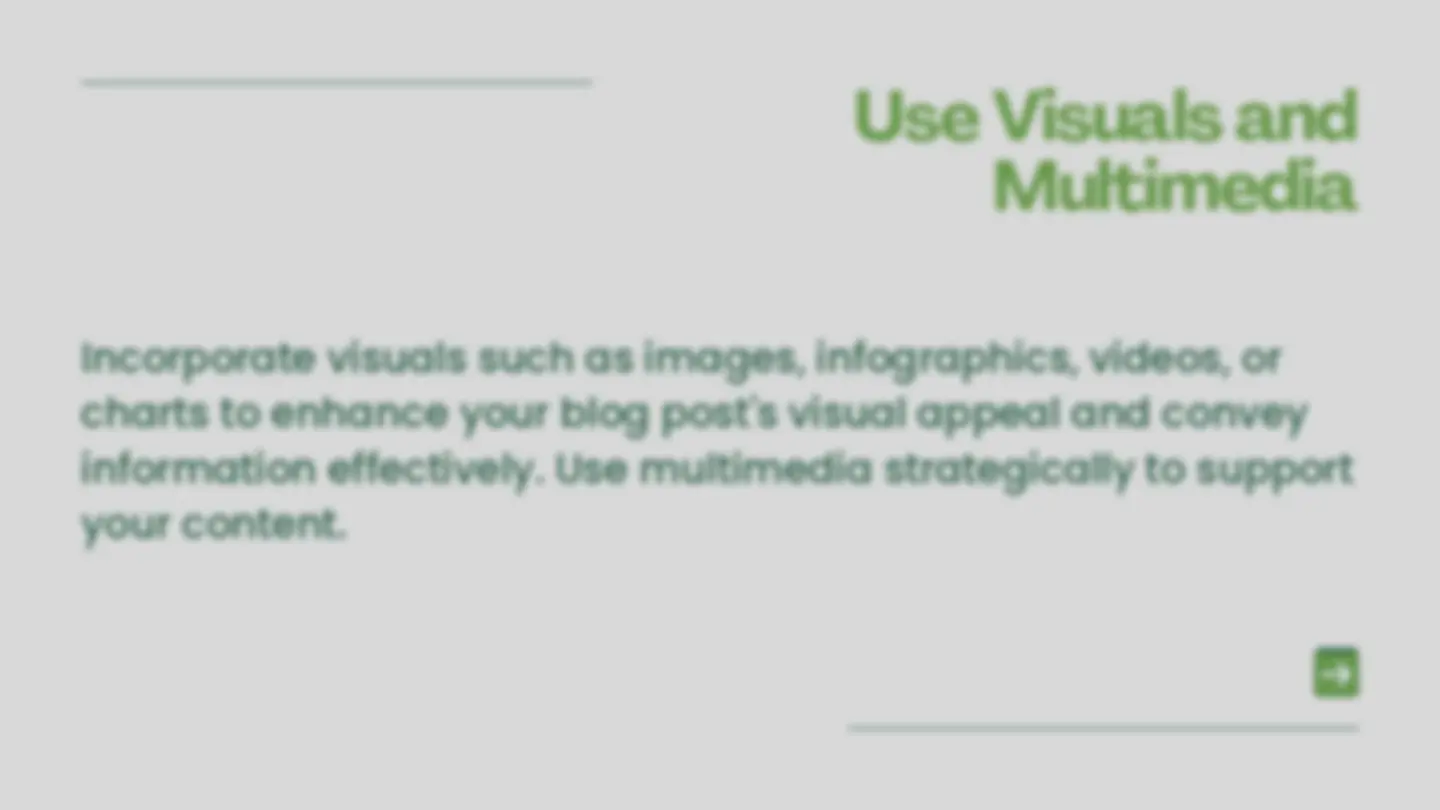

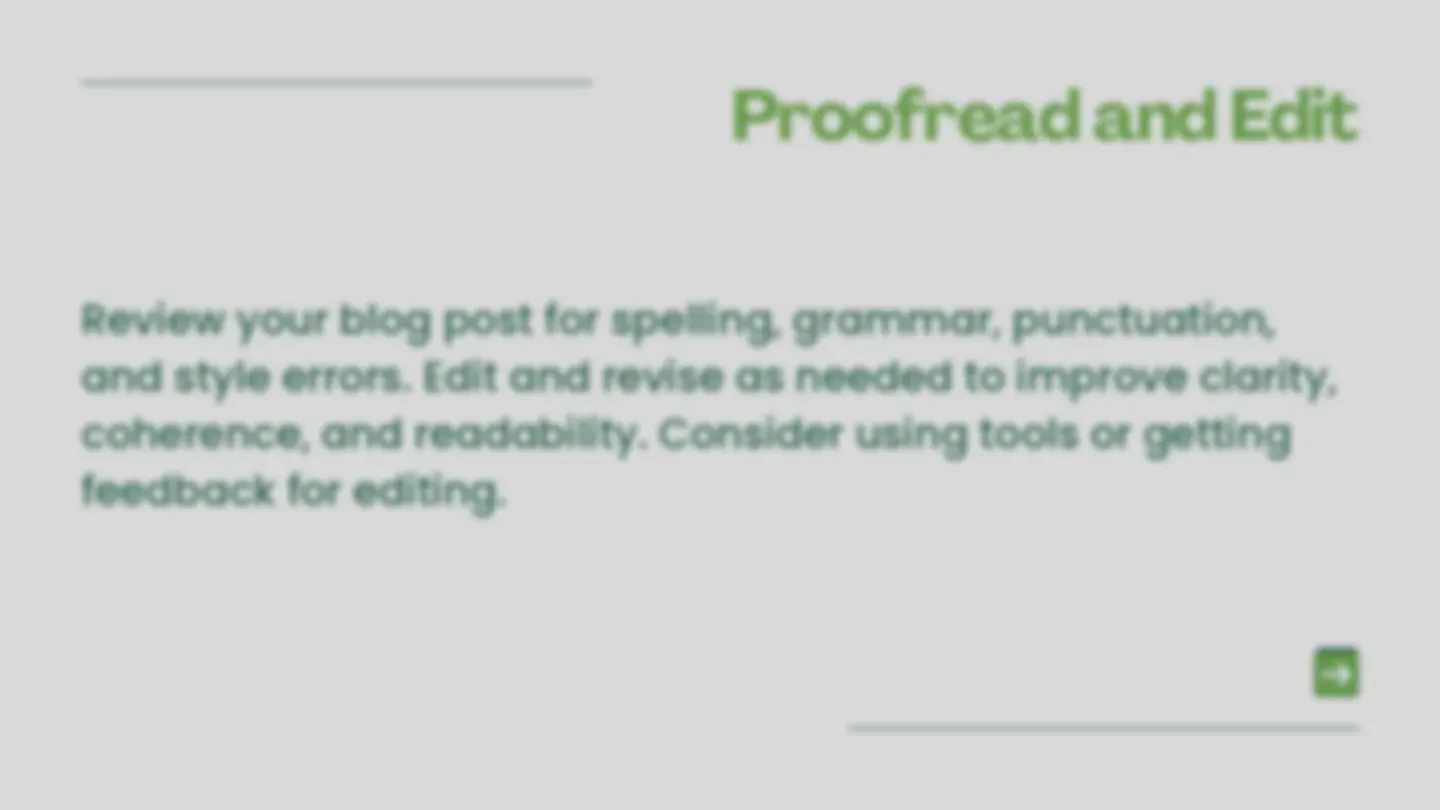
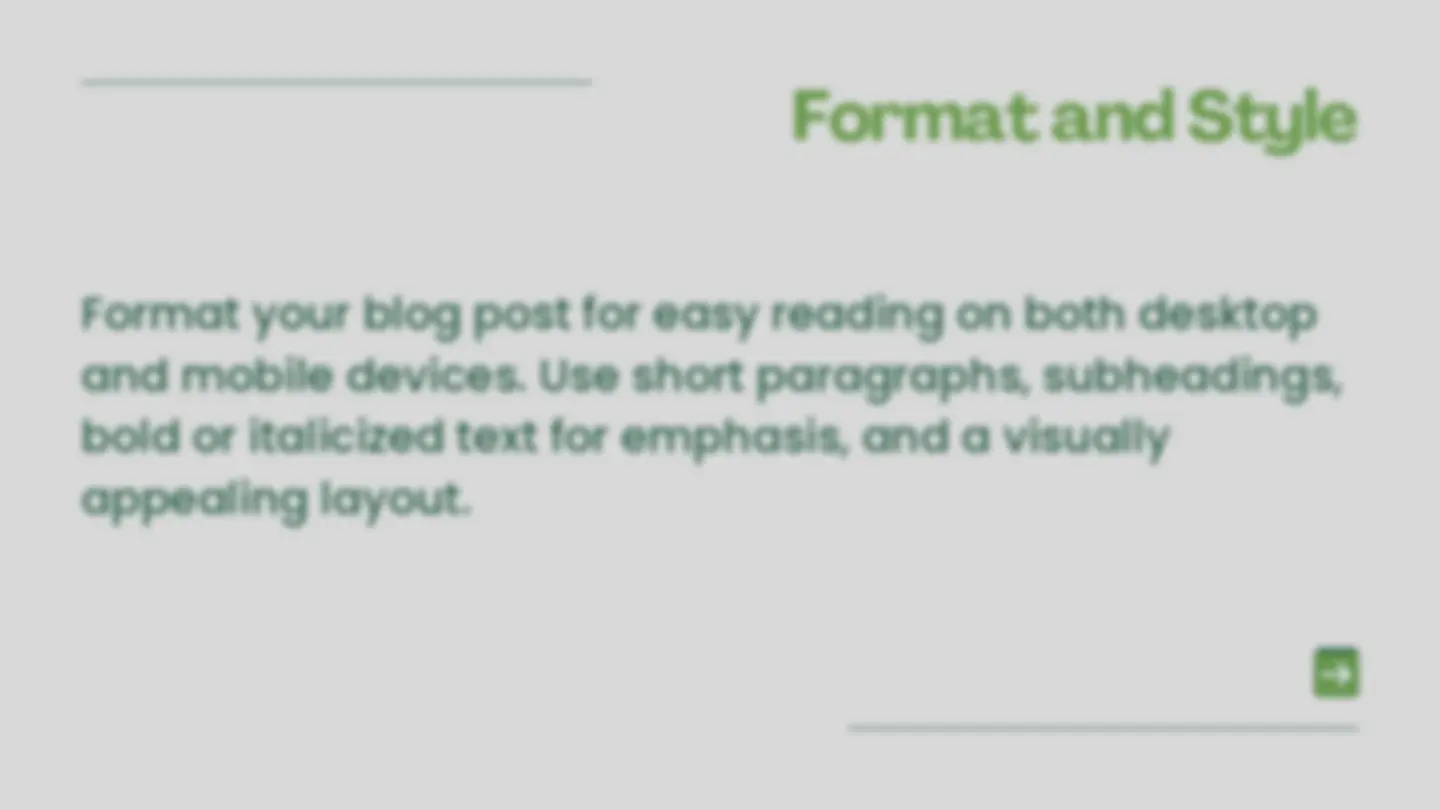
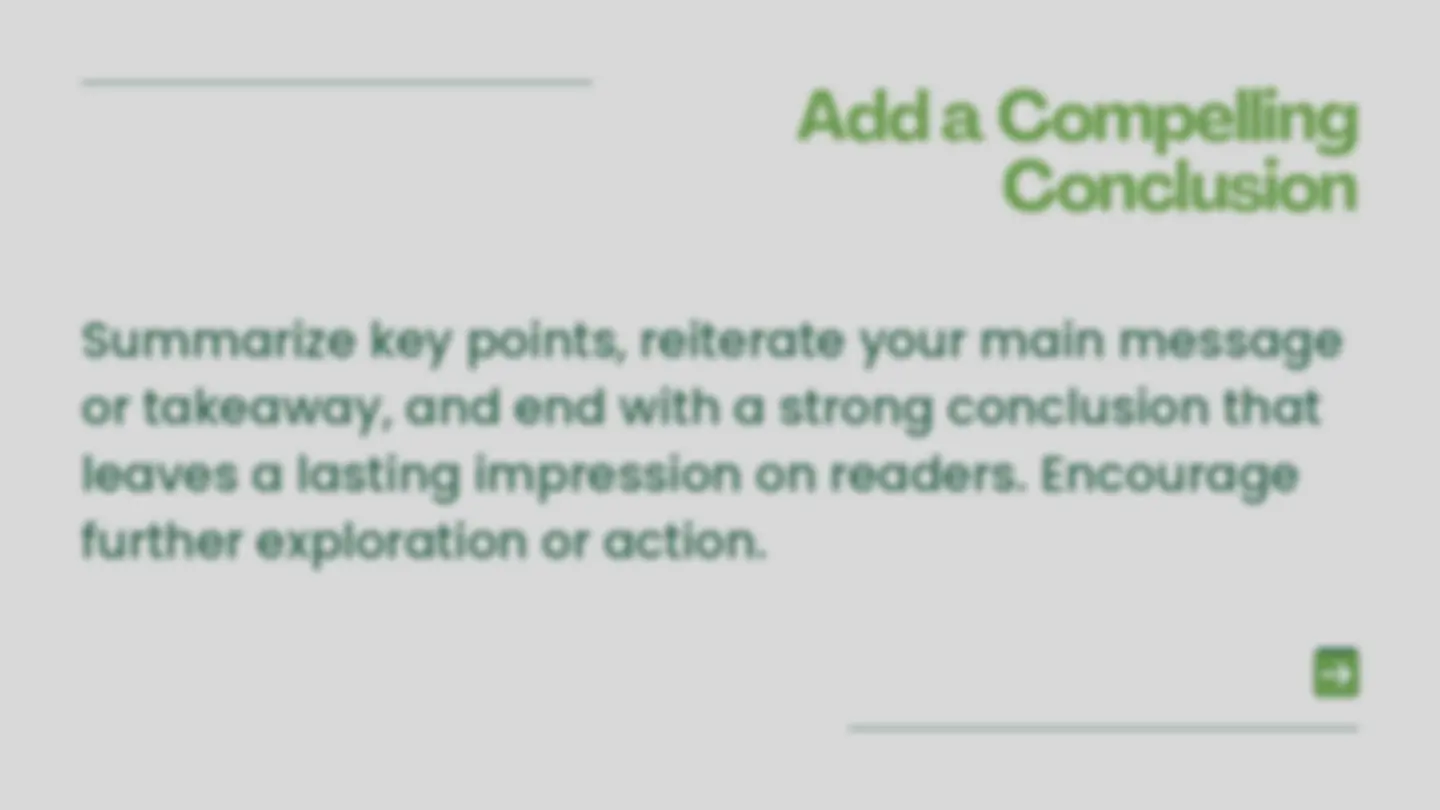




Study with the several resources on Docsity

Earn points by helping other students or get them with a premium plan


Prepare for your exams
Study with the several resources on Docsity

Earn points to download
Earn points by helping other students or get them with a premium plan
Community
Ask the community for help and clear up your study doubts
Discover the best universities in your country according to Docsity users
Free resources
Download our free guides on studying techniques, anxiety management strategies, and thesis advice from Docsity tutors
This presentation dives into the art of crafting impactful blog posts that captivate readers and drive traffic to your website or platform. It covers key strategies such as understanding your target audience, creating compelling headlines, structuring posts for readability, incorporating visuals and multimedia, and optimizing for SEO.
Typology: Slides
1 / 19

This page cannot be seen from the preview
Don't miss anything!












Presented by: Abigail Atiwag
Writing a blog post involves a mix of creativity, structure, and engaging content to captivate your audience and convey your message effectively. Here are steps and tips to help you write a successful blog post:
Research Your Topic Conduct thorough research to gather information, statistics, examples, and references related to your topic. Use credible sources to ensure accuracy and credibility in your blog post.
Craft a Compelling Title Create a catchy and descriptive title that grabs readers' attention and entices them to click and read your blog post. Use keywords relevant to your topic for SEO optimization.
Write a Captivating Introduction Start your blog post with a captivating introduction that hooks readers and introduces the topic. Use an engaging opening, ask questions, share anecdotes, or present a surprising fact or statistic.
Develop Engaging Content In the body of your blog post, elaborate on your main points, arguments, or ideas. Use clear and concise language, avoid jargon, and break up text with subheadings, bullet points, and visuals.
Provide Value and Insights Offer valuable insights, tips, solutions, or perspectives that benefit your readers. Address their needs, solve problems, answer questions, or provide actionable advice and recommendations.
Optimize for SEO Use relevant keywords, meta descriptions, and alt tags for images to optimize your blog post for search engines. Consider SEO best practices to improve visibility and ranking in search results.
Proofread and Edit Review your blog post for spelling, grammar, punctuation, and style errors. Edit and revise as needed to improve clarity, coherence, and readability. Consider using tools or getting feedback for editing.
Format and Style Format your blog post for easy reading on both desktop and mobile devices. Use short paragraphs, subheadings, bold or italicized text for emphasis, and a visually appealing layout.
Optimize for Sharing Make it easy for readers to share your blog post on social media platforms. Include social sharing buttons, encourage sharing in your CTA, and engage with readers who share your content.
Promote Your Blog Post Once your blog post is published, promote it through your social media channels, email newsletters, guest blogging, collaborations, and other marketing efforts to reach a wider audience.